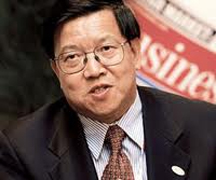BEIJING, (Reuters) – Rising trade protectionism and frustration over its domestic subsidies spell trouble for China and could lead to more friction within the World Trade Organization than Beijing has grown accustomed to over the past decade.

On the eve of China accession to the WTO 10 years ago this December, naysayers warned that the country could falter under the demands of opening up its economy. Now there is little debate that it has been a boon in making China the world’s largest exporter and the second largest trading nation.
But China’s next decade in the trade group could be tougher. That’s partly because while the country has opened many of its markets as required under the WTO rules, it still heavily subsidises key industries.
State spending on clean technologies, which has already drawn ire from China’s trading partners, could continue rising after last week’s confirmation by Beijing of a massive investment plan for “strategic industries”.
That can only lead to increased friction as the global economy slows and countries scramble to boost exports.
“Some aspects of China’s economic system are fundamentally inconsistent with the market economy-based principles of the WTO,” said Wang Jiangyu, a law professor and WTO expert at the National University of Singapore. “In the first few years, they (WTO members) could tolerate this, but as China’s trade grows you will see more and more cases against China.”
Experts say a recent WTO ruling that cheap state-supported financing and land give an unfair advantage may lead countries to increasingly resort to anti-subsidy cases against China — a trade weapon that aims at the heart of China’s state-backed economic model.
FIRING AT THE CHINESE
“MOTHERSHIP”
To date, WTO members have used anti-dumping cases to target China’s trade policies.
That’s relatively easy to do, since China is still considered a “non-market” economy under the terms it negotiated in 2001. To build a case, another country can substitute China’s prices with those of another, often pricier market economy.
That clause — which Beijing sees as unfair — expires in 2016.
But a recent WTO decision said state involvement must be accounted for in bank financing, land prices and production input prices.
That means the possible use of a similar tactic in anti-subsidy cases: using higher third country market rates and prices to show subsidised pricing.
In essence, China must still answer for its non-market economy subsidies past 2016.
Chin Leng Lim, a law professor at the University of Hong Kong, said challenging China on cheap land and financing — when the government owns all the land and banks — is more intrusive than going after unfairly underpriced goods. It is firing at the “Chinese mothership”.
“It’s about saying to China: we don’t like the way you regulate and control your banks. We don’t like the way you regulate land. We don’t like the support you give to your state-owned enterprises. So change all of that,” Lim said.
Anti-subsidy retaliation is already happening, and green technology is a likely battlefield.
In early November, the U.S. government launched an investigation into imports of Chinese made solar panels after U.S. solar companies called for anti-dumping and anti-subsidy duties. In return, China’s commerce ministry said on Friday it was looking into U.S. renewable energy subsidies.
“That’s what a trade war looks like, when it is tit-for-tat,” Lim said. “And it is all happening in and around anti-subsidy law.”
CHANGING GOALS
The man who negotiated China’s entrance into the WTO is worried about his country’s pledges to liberalise the economy.
“Essentially, after 10 years, it seems China is getting farther from the WTO,” Long Yongtu said at a conference on the WTO anniversary in October.
WTO clashes are bound to rise, say trade experts, not only because trade rules are being used differently, but also because — as the shift away from the WTO shows — China’s goals have changed.
Scott Kennedy, director of Indiana University’s Research Center for Chinese Politics and Business, said now the priority of China’s leaders is not liberalising the market but boosting competitiveness by moving up the industrial value chain.
“That is a different mission than what Long Yongtu and his team were pushing for when they were pushing for liberalisation to improve the Chinese economy,” Kennedy told Reuters in Beijing, where he is also visiting professor at the University of International Business and Economics.
During trade talks in Chengdu, China confirmed to U.S. officials that Beijing plans to pour $1.7 trillion into a number of strategic sectors over the coming five years.
While officials promised foreign firms would not be overlooked in the massive spending spree, foreign governments may see much of the investment as unfair subsidies for home-grown champions — many in cleaner and hi-tech sectors.
After a decade, the debate has come full-circle, and more of China’s exasperated trade partners are likely to head to the WTO dispute resolution system looking for answers.
Lim, the University of Hong Kong law professor, said it is much like the debate before 2001, when they were deciding whether to allow a country that is not a free-market economy into the WTO.
“The counter argument to that was, how can you call it a world trade organization if China is not in it? So do we need to change China’s rules, or do we need to change global rules to accommodate China?” he said.




